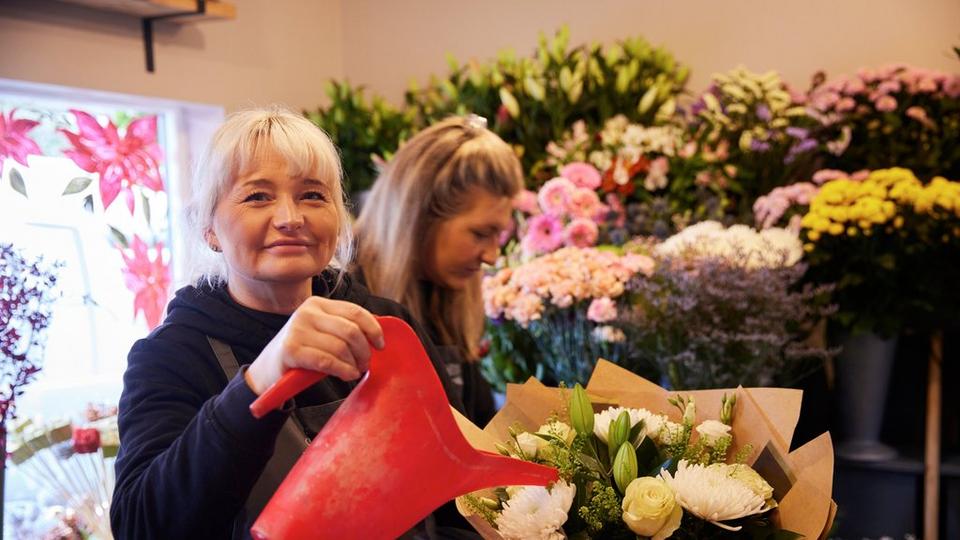Anemone: Ultimate Flower Guide
Anemone (pronounced ah-nem-o-nee) are beautiful spring flowers (not undersea creatures though they do share a name!) They’re great for adding colour to any garden and they also make beautiful additions to cut flower arrangements too. Not too familiar with anemones? We’re here to help. This handy guide will tell you everything you need to know about the anemone flower including different varieties, fun facts and helpful tips on how to grow your own.
Did you know?
- Anemones are part of the Ranunculaceae family, the same family as the buttercup.
- Their common name is windflower with the name ‘anemone’ coming from the Greek for ‘daughter of the wind’.
- Anemones have been represented in many famous paintings by artists including Monet and Matisse.
- There are over 120 species of anemone and they grow wildly in many European countries as well as in North America and Japan.
- Many varieties grow in spring but there are some that also grow in autumn
- They are closely related to the Pasque flower and are often placed in the same genus
- Anemones are sometimes used in medicine as a treatment for cramps, menstrual problems and emotional distress
- The petals close up at night and reopen in the morning to protect itself from cold nights. Because of this, anemones can often also represent relaxation
- Anemones are perennial flowers so they will grow back year after year
Anemone meanings and symbolism
It’s all about the colour when it comes to beautiful anemones, so pay close attention to the shade if you want to share some special meaning with someone.
- White anemone Symbolises sincerity because of their delicate nature.
- Red & pink anemone Are typically associated with death or forsaken love.
- Purple anemone Often symbolise protection from evil.
Anemones in culture
Around the world and through history anemones have come with various meanings and associations. In Christianity red anemones symbolise the blood of Christ when he was on the cross and they’re also often depicted in Christian paintings alongside Jesus being crucified or the Virgin Mary mourning.
Europeans used to think anemones carried bad omens and misfortune. It was believed so fervently, people would hold their breath through fields of anemone to avoid bringing this supposed misfortune upon themselves!
In English and Irish folk tales, many believed that fairies would sleep within the petals as they closed up at night. In depictions of fairies, you will often also see anemone flowers alongside them (this is our favourite anemone myth, we promise none of our florists dislodge any fairies when crafting bouquets with anemones!)
In Chinese culture, red anemones are also associated with death. This is the same within Greek and Christian cultures.
Anemones have also been represented in many famous paintings by the likes of Monet and Matisse.
Mythology
Anemones have a long history and their own mythology. The Roman poet Ovid writes in his famous epic poem Metamorphoses that the anemone was created when Aphrodite, the ancient Greek goddess of love and beauty, mixed nectar with the blood of Adonis. Aphrodite held deep feelings for the hunter Adonis. Ares discovered this and, in a jealous fit of rage, killed Adonis. As Aphrodite mourned her lost love, the tears that fell to the ground bloomed into the beautiful anemone flower. Hence their significance in many cultures as a symbol of death and forsaken love.
Types of anemone
Here are three common types of orchid you can buy in the UK.
Japanese Anemone
Balkan anemone
Wood anemone
How to grow anemone flowers
Anemones are perennials, which means once you plant them they’ll bloom year after year. And they’re surprising easy to grow, so there’s no excuse not to feature these beauties somewhere in the garden. Here's a step by step guide to growing your own.
Step 1: Buy some anemone bulbs.
Head to your local nursery or garden centre, or have a look around online for unusual varieties. We strongly recommend buying in the UK to make sure you’re not creating a huge carbon footprint or accidentally welcoming anything invasive to your garden.
Step 2: Check when to plant them
Your bulbs should feature some advice on what time of year is best to plant them. If not Google the variety and you’ll get a rough idea.
Step 3: Choose a good spot
Look for somewhere where the soil can drain well. Aim for ground that’s features compost or bark (these can help the soil avoid getting too soggy). You also need quite a sunny spot, they’ll need somewhere they can get a full day (or at least half a day) of sunlight.
Step 4: Prep your bulbs
Before you plant them, soak your bulbs in lukewarm water for a few hours to help prepare them to go in the ground. This will act as a "wake-up call" of sorts so they will be ready to plant once you have prepped the soil.
Step 6: Dig!
Dig some small holes and pop your bulbs in about 1-2" down. Don't worry about which way up you plant them as anemones will grow regardless; they can figure out which way is up. How clever is that?
Step 6: Water
Once your bulbs are safely in their new home ensure you water them well and gently pat the soil around the bulb to set it. Now sit back and let nature take over.
Step 7: Wait for blooms
Anemones will usually start to flower in the spring but some do flower in the autumn.
As your anemones start to bloom, you can cut them to create small bouquets. This won't hurt the plant or the growth.
After the flowers finish blooming, leave the foliage on to collect sunlight which will feed the plant and strengthen the bulb for the future. You'll still need to water it while the leaves are photosynthesising but only when the soil is looking a little dry.
Once the summer is over, the leaves will yellow and begin to die. You can now cut back the foliage and let it rest for a few months. Since anemone flowers are perennials, they will grow back year after year given that they are taken care of properly.
How to care for cut anemones
Anemones don’t need any special care once they’re in a vase, just the usual good habits:
- Trim stems at an angle with a clean knife or secateurs (using scissors can crush the stem).
- Change the water every other day to limit bacteria growing (anemones do love water so make sure you keep it topped up too).
- Pop your anemones in a cool spot away from direct sunlight.
Anemones won’t last a long time once they’re cut (which is why we love them as garden blooms too) but their beauty makes them worth the effort.
Common anemone problems and FAQs
Are anemones poisonous?
Yes. If you eat them they won’t agree with you, so just enjoy them with your eyes.
When are anemones in season?
Anemones usually flower early in the spring but some varieties will bloom well into the autumn.
What other flowers go with anemones?
All sorts of blooms go with anemones, we love them with hydrangeas and roses for romance and dreamy texture. The bright white kinds are great for bringing freshness and contrast to arrangements too.
Get offers, first looks & more
Our emails are packed full off flower power, sign up to get 15% off your first order.

%20(1).jpg?$poi-square$&fmt=auto&qlt=default&fmt.jp2.qlt=60&bg=rgb%28254%2C+204%2C+167%29&w=960&aspect=16%3A9)

